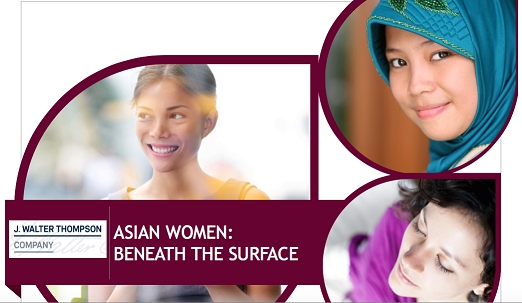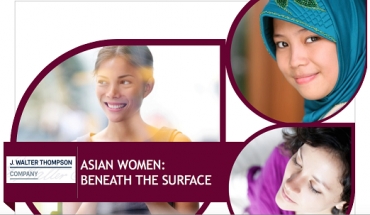
 Cannes 2015 shone a very bright spotlight on an emerging topic more advertisers are paying attending to: girl power.
Cannes 2015 shone a very bright spotlight on an emerging topic more advertisers are paying attending to: girl power.
With the introduction of the Glass Lion category that celebrates work that addresses gender inequality or injustice and conversations from every corner of the Palais about the importance of female leadership and a proper representation of women in the work they create, it is clear that understanding women, whether behind the work or in it, are the hot topic of advertisers around the globe.
J. Walter Thompson Asia Pacific contributed to the growing conversation about women with the release of their “Asian Women: Beneath the Surface” report.
Women’s roles shifting rapidly across booming Asia, thanks to new career opportunities, better education and changing traditions. From recasting the “leftover women” phenomena in China to riding the technopreneur wave in Indonesia, women are challenging notions and redefining their roles in Asian society today.
In the report, compiled from a survey of 1,500 women aged 20-45 in China, India and Indonesia, examined women’s attitudes toward finances, career, dating, family roles and beauty norms in an effort to understand what this means for marketers and brands.
Atika Malik, Global Planning Director, J. Walter Thompson Asia Pacific, said of the study, “The aim of this study was to go ‘beneath the surface’ and understand new opportunities and tensions for women in Asia’s powerhouse economies – China, India and Indonesia. To uncover how women based on their unique cultural context are navigating these changes differently.”
Highlights from the report below.
In China:
Most women in China believe that beauty is extremely important to succeed in the workplace. Only 13% of Chinese women want to look beautiful in order to attract men.
China, where women “hold up half the sky,” has the highest rate of working women in Asia. But Chinese women, who face expectations to settle down, have children – and take care of aging parents – also want a more equal relationship at home.
Getting along with their in-laws is the #1 key to happy marriage.
What this means for brands: This new generation of financially independent Chinese women provides opportunities for categories like real estate companies, banking and auto marketers. Advertising role models must portray both beauty and brains. With grandparents increasingly doing parental roles, brands should include them in childcare directed communication.
In Indonesia:
Over half of the Indonesian women surveyed want to open their own business – much higher than any other market. Technology is making this easier, leading to a mushrooming of “Instashops.”
Women are making headway in non-traditional fields, from business to sport. Today’s role models include World Bank COO Sri Mulyani and the country’s first female F1 driver Alexandra Asmasoebrata.
Yet 90 percent of Indonesian women say advertisers could do more to connect with them, for example, with more realistic portrayals of today’s women in advertising.
What this means for brands: Work is the most influential driver of change for Indonesian women, but those in rural parts of Indonesia are often left out. Brands that help women navigate tradition and modernity will strike a chord with women. Financial institutions, mortgage lenders and car companies tend to overlook women, even though many women make significant financial decisions in the family.
In India:
India’s labour force participation rate for women is low and falling – from just over 37 percent in 2005 to 30 percent in 2013 – but that’s partly because more women are studying longer. 91 percent believe that being educated is the single most important criteria for a sucessful woman.
Career women earning their own money are redefining traditional gender roles. For example, the 2014 Hindi biopic, “Mary Kom,” is based on a true story of a world champion boxer coached by her husband.
64% of the women surveyed felt their opinion is valued at home and work.
Popular culture and advertising are challenging traditional sterotypes. That is perhaps why women surveyed felt that advertising reflected them better than in China or Indonesia.
What this means for brands: Brands must keep up with and even lead popular culture, celebrating talent and encouraging women to find their identity. Maybe because many ads have started to show a more nuanced portrayal of women, Indian women see advertising in most categories as resonating with them, with the exception of real estate.
“Brands need to understand culture and tradition in Asian society, but they also need keep pace with the changing narrative among women in key, emerging markets,” said Tom Doctoroff, CEO of J. Walter Thompson Asia Pacific. “And that’s a message for all brands, not just those that typically ‘talk’ to women. Categories that have traditionally focused on men could also do more to reach out to the region’s female consumers, who have more to spend and are driving both household consumption and family finances in these key markets.”
